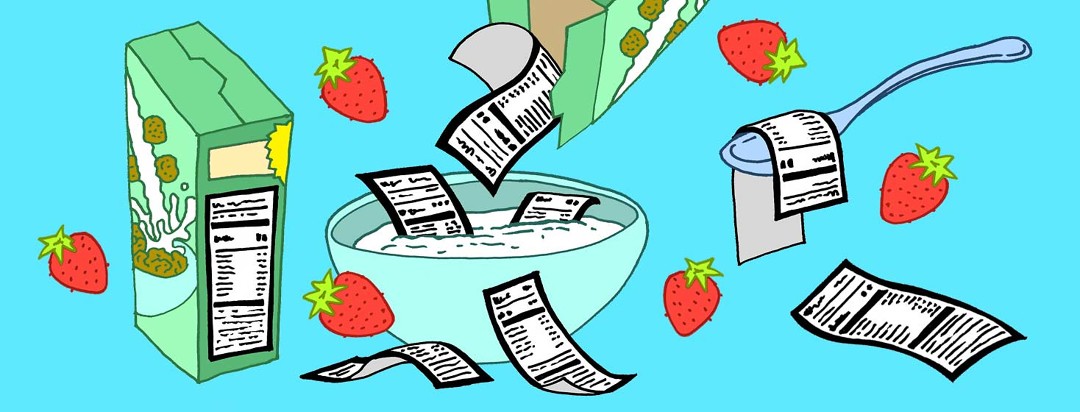Failing at Fiber
Adequate dietary fiber consumption is associated with a reduced risk not only for many digestive ailments, but also for cardiovascular disease, coronary heart disease, stroke, hypertension, obesity, prediabetes and type 2 diabetes, colorectal, gastric, and breast cancers. That is a pretty amazing range of benefits for something so simple.
How are you doing with fiber consumption?
The recommended intake varies according to age and gender, but for middle-aged adults like us, the daily number is approximately 25 grams (g) for women and 38g for men (reduced to 21g and 30g after age 50). Chances are you think you’re doing okay – most people think that.
The 2013 Food and Health Survey conducted by the International Food Information Council found that a majority of consumers have some knowledge of fiber’s health benefits, 68% said fiber content influences their food purchases, almost 90% said they were trying to increase fiber consumption by eating more whole grains, and 67% believe they meet their fiber needs.
The real story – only 5% of Americans regularly consume the recommended amount of fiber. That means the odds are strong that you (and maybe me) are failing at fiber. How can that be?
Where do you find the fiber content?
Well, often consumers misunderstand which foods are either good sources of fiber (2.8g per serving) or excellent sources of fiber (5.4g + per serving). “Whole grain” is a good example. Consumers assume that the label “whole grain” is, more or less, equal to high fiber – not true. And, a study of shopping habits found that less than 15% of shoppers look anywhere other than the “front panel” of a product for information. Spoiler alert – the nutrition facts label is NEVER on the front panel of food products, and that’s where you find the fiber content of the food. Brown rice, that healthy whole grain, has only about 1 gram of fiber per ⅓ cup (15g carbohydrate) portion.
How can we get more fiber?
That’s an interesting question because fiber is a carbohydrate that often comes “packaged” with other carbohydrates like sugars and starches. All-bran cereal has 10g fiber in a ½ cup portion, but 23g total carbohydrate (including 6g added sugar). A medium apple has about 5g of fiber, including extra-healthy soluble fiber, but 15g total carbohydrate. There’s almost 8g fiber in ½ cup lentils, but more than 20g total carbohydrate. A ½ cup portion of oatmeal has about 2g fiber with its 15g total carbohydrate load.
Remember: Use the nutrition facts
Nuts, chia seeds, avocado, and non-starchy vegetables will add fiber to your diet without too many other carbohydrates, but in the end, our best bet is to make sure we’re getting fiber from a variety of sources at every meal. And, the only way to know is to join the 15% of shoppers who look beyond the “cover” to read the nutrition facts panel. If you have already been reading the nutrition labels, by the way, you would know that one ounce of an occasional treat of dark chocolate candy has twice the fiber of ⅓ cup brown rice.

Join the conversation